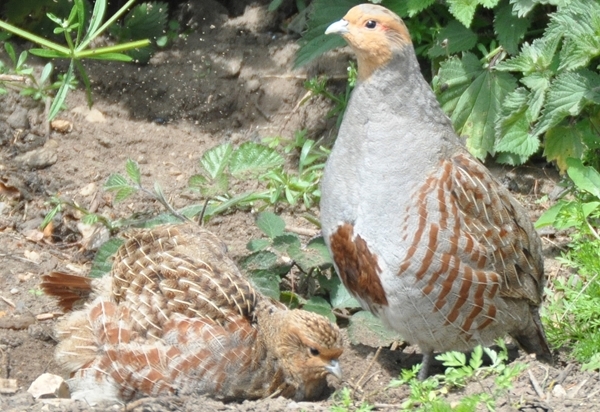
ONE of the world’s longest-running wildlife monitoring schemes needs your help in 2018.
Led by the Game & Wildlife Conservation Trust (GWCT), The Partridge Count Scheme (PCS) is a project that aims to conserve a popular farmland bird - the grey partridge.
The count, which started in 1933, collects information on the annual abundance and breeding success of grey partridges.
Whether you own a small field or a large estate, the count offers a valuable insight into how well your partridges breed, survive and benefit from your habitat and management. As part of the PCS, your hard work contributes to a better understanding of how partridges are faring nationally.
Undergoing a steep decline since the 1960s, grey partridges’ populations have been affected by wet summers, low chick survival and low winter survival rates.
However, farmers, land managers and gamekeepers can help. Chick survival rates can be improved by having the right insect-rich chick-food habitats and escape cover in place to minimise losses to predation. This hard work can pay-off, with PCS sites showing that, since 2001, grey partridge abundance has increased slowly in most years.
Coordinating the results of the Partridge Count Scheme is GWCT scientist Neville Kingdon.
He is urging farmers, gamekeepers and land managers to make it their New Year’s resolution to take part in the upcoming Spring count.
“This really is the time when we need you to log details of the numbers you have on your land," said Neville.
“In general, partridge numbers have been in decline since World War Two due to a range of factors, but taking part in the count will help provide results on the current limitations.
“Management for grey partridges has additional benefits for the diversity of wildlife you see on your land or shoot, with increases in arable flora, farmland invertebrates and farmland birds all possible.”
Each count can be completed in the morning or in the evening.
Neville added: “It’s best not to attempt everything all at once, take your time when counting, as the results give us an idea as to what’s happening on the ground.
“There are no restrictions on how many partridges you need to have as each and every one matters and all counts are submitted to the Trust’s national database."
There are currently 15 regional PCS groups which meet to provide face-to-face explanations on how to manage land effectively for grey partridges.
Factsheets on habitat creation, management and predation control are also available for download from the GWCT’s advisory web pages.
If you are thinking about re-establishing grey partridges through releasing then please, first, read our guidelines here
https://www.gwct.org.uk/advisory/guides/re-establishing-grey-partridges-through-releasing/guidelines-for-re-establishment/.
For more information, or further questions, contact partridgecountscheme@gwct.org.uk
Notes to editors
The Game & Wildlife Conservation Trust – providing research-led conservation for a thriving countryside. The GWCT is an independent wildlife conservation charity which has carried out scientific research into Britain’s game and wildlife since the 1930s. We advise farmers and landowners on improving wildlife habitats. We employ 22 post-doctoral scientists and 50 other research staff with expertise in areas such as birds, insects, mammals, farming, fish and statistics. We undertake our own research as well as projects funded by contract and grant-aid from Government and private bodies. The Trust is also responsible for a number of Government Biodiversity Action Plan species and is lead partner for grey partridge and joint lead partner for brown hare and black grouse.
For information, contact:
Eleanor Williams
Telephone: 07592 025476
Email: press@gwct.org.uk